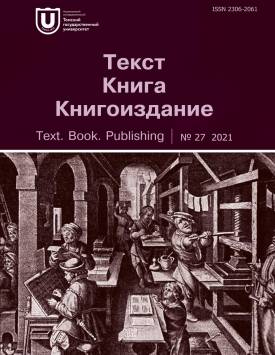The Transformation of the Reading Model in a Digital Culture
The article explores the transformation of the traditional reading model in the conditions of the modern information society and digital culture. The author considers the problem in the anthropological aspect as a radical cognitive restructuring of reading perception and modernization of reading practices. This requires a revision of the essential concepts of the reading theory and of methodological approaches to their study. Firstly, this concerns texts that change their nature in the digital environment and acquire a multimodal polycode character. Changing the medium and the way in which it is recorded leads to a change from linear, sequential reading to a parallel, divergent way of reader’s thinking, which significantly affects the depth of attention and understanding of the text. In this regard, researchers note the gradual replacement of slow, thoughtful reading by widely used scanning techniques, superficial search reading that realizes specific pragmatic goals. The modern reading model replaces the traditional, consolidating function with a differentiating one, related to the stratification of the readership and the formation of different reading subcultures and online reading communities. Internet reading, which is especially popular among young people, is becoming “social”, aiming at active online communication and the creation of its own fanfiction content. This removes the institutional distance between the author and the reader, and significantly changes the status position of reading, which loses its role as a terminal value and becomes a secondary, collateral occupation. Reader differentiation is also evident in the mental digital generational divide; reading practices of adherents of the traditional reading model become increasingly elitist in today’s socio-cultural context. This gap is exacerbated by the current trend towards the visualisation of reading, which accelerates perception of information but negates essential reading competencies. The transformation of the reading model has deep historical roots and is legitimate, so the reader’s ability to be “multitextual”, i.e. to switch to different modes of perception, choosing different reading strategies depending on the text and the situations, is important today This can be facilitated by education and book publishing that adapt to the characteristics of the new reading model.
Keywords
digital divide, reading strategies, multimodality, reading modelAuthors
| Name | Organization | |
| Vorobyeva Tatiana L. | Tomsk State University | tatnick@mail.ru |
References

The Transformation of the Reading Model in a Digital Culture | Tekst. Kniga. Knigoizdanie - Text. Book. Publishing. 2021. № 27. DOI: 10.17223/23062061/27/7
